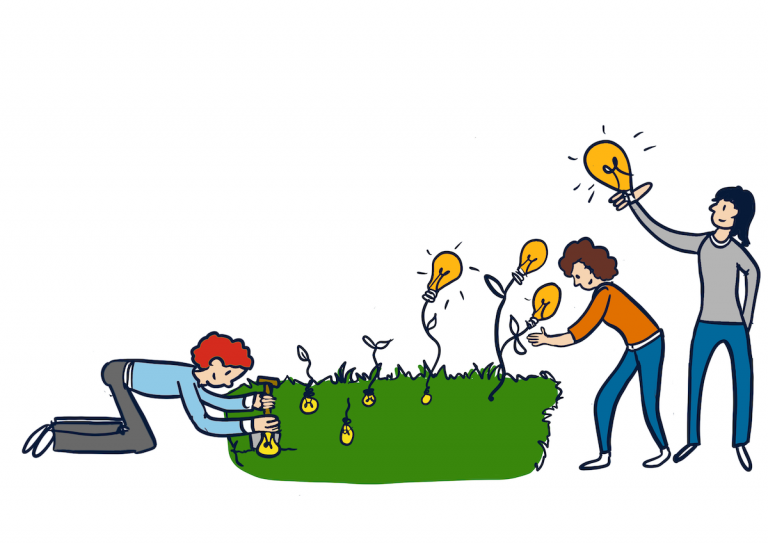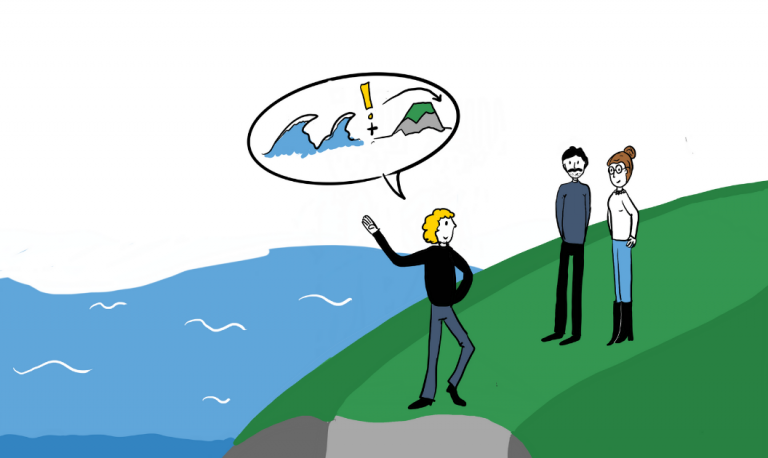Virtual Strategy Days
- 01 April 2020
- Willemijn Bosma
During the (Virtual) Strategy Days for all work package leaders, from March 30th till April 1st , Work Packages ‘Climate adaptive Flood Defence’, ‘Emergency Response’ and ‘Knowledge Infrastructure (Next Generation)’ were in the spotlight.
Main topics Virtual Strategy Days
Main topics were identifying mutual dependency, discussing the planning and looking for synergies. Mid-April, partners were invited to join in on the discussion on the results. In short, we want to give you a glimpse into the progress of Climate Adaptive Flood Defence, Emergency Response and Knowledge Infrastructure.
Climate Adaptive Flood Defence
The Work Package Leader Climate Adaptive Flood Defences is Patrik Peeters from the Department of Mobility and Public Works (DMOW, Flanders). Partners involved are: DMOW, STOWA, Université de Lille, Environment Agency, TU Delft, ISL Ingénerie, HZ University of Applied Sciences, Cerema and Rijkswaterstaat. Patrik presented the 3 main topics of this work package:

- In situ destructive levee tests
- Guidance on levee assessing, design & maintenance
- Validation of innovative solutions, tools and services
The test site is subdivided into a dozen levee stretches, some of which are of more interest to Polder2C’s . The planning of the contractor, responsible for the depoldering works (under Sigmaplan) is leading. Some of you are still recovering from this slightly optimistic schedule which is nevertheless foreseen by the contractor…
Levee stress tests
“We will execute several levee stress tests, yielding damage following steady overflow as well as wave impact and overtopping, and breach growth experiments, preceded by extensive site surveys. According to Patrik Peeters, the current levee strength models do not fully understand the mechanisms leading to breach formation and as a consequence do not allow to design levees in a cost efficient way. At the same time the risk of wave loading and overflow due to sea level rise is expected to increase.

Filling the knowledge gap
“Because we lack knowledge, assumptions are conservative when designing levees and levee maintenance is neglected. We want to extend our grip on the actual strength of the levee, and what it determines. This way, we would like to assist levee managers when prioritizing and implementing levee improvements, either by maintenance, either by strengthening works. With regard to the latter, the test levee is located exactly on the border of the Netherlands and Belgium. This makes it possible to compare the management and maintenance conducted on both sides of the border (in particular cover layer in place and frequency of the mowing management) during the last decade.
Patrik Peeters: “We hope to come up with guidance: when is a specific feature or anomaly no reason for concern and when does it become a weak element. The latter needing special attention, either by extended maintenance or (temporary) emergency measures (see WP2), or by a sound reinforcement strategy in order to prevent breaching”.
Emergency Response
The Work Package Leader Emergency Response is Bart Vonk from Rijkswaterstaat (the Netherlands). He is assisted by Marian Booltink from STOWA (the Netherlands) and Marc Balemans from the Dutch Ministry of Defence. Partners involved are: STOWA, DMOW, South West Water, Environment Agency, Ministry of Defence, HZ University of Applied Sciences, Cerema and Rijkswaterstaat. Vonk presented the 4 main topics of Living Lab Emergency Response:
- Expert Exercises, levee surveillance and monitoring
- Emergency Response exercises
- Breach Closure
- Breach Initiation

Emergency Response
“What makes this Living Lab Emergency Response special is that not only levee failure tests are carried out, but Emergency Response can also be put to the test. We can test and practice Emergency Response under controlled but very realistic conditions.”: says Marian Booltink who also works as crisis coordinator with a Dutch Water Authority (HDSR). “Based on their own experiences, complemented with the insights they gain during the exercises, various teams of international levee experts will develop the best possible levee monitoring instructions for the levee guards who are the eyes and ears in case of calamities. We record everything in words and images. For example, for e-learning purposes. It is extremely important that we transfer the knowledge we have acquired to levee guards of the future. Precisely because we hardly have any experience with real damage in the Netherlands. We can learn a lot from our foreign partners in that respect.”
Bresdefender
Marc Balemans, Ministry of Defense: “The Living Lab Emergency Response also tests the effectiveness and reliability of some existing and new emergency measures. One of the tests will be with the “Bresdefender”. This is a pontoon that the army uses to transport heavy equipment over the water. This can be applied in a reinforced condition (filled with water instead of air) against a weakened levee body to prevent or delay a levee breach. The idea is inspired by the story of the boatman who sailed his small barge in a breach of the levee near the Hollandse IJssel in 1953 and thereby prevented a disaster.”
Playing with sand, clay and wild animals
Bart Vonk, Rijkswaterstaat ends on a cheerful note: “What we are doing in the Living Lab Emergency Response is of interest to anyone that works in the field of Emergency Response. Everyone should want to join the exercises we will be organizing the coming years and we will be inviting you to come and join us. Besides, who would not want to play with clay, sand and wild animals? It is a golden opportunity to play in real life and to prepare your own organization before and during a high-water situation.”
Knowledge Infrastructure and preparing the Next Generation
The Work Package Leader Knowledge Infrastructure is Pieter Rauwoens from KU Leuven, in close collaboration with Wietse van de Lageweg from HZ University of Applied Sciences. Partners involved are: STOWA, DMOW, Université de Lille, Environment Agency, TU Delft, Ministry of Defence, KU Leuven, ISL Ingénierie, HZ University of Applied Sciences, Cerema and Rijkswaterstaat.

Van de Lageweg presented the 5 main topics of Knowledge Infrastructure and preparing the Next Generation:
- Data Wizard
- Toolbox Flood Defense
- Toolbox Emergency Response
- Educating the Next Generation
- International replication HPP results
Next Generation
“In the Hedwige-Prosperpolder our next generation water managers can prepare for the challenges of the future. Normally you sit at your desk calculating everything, but now you can test theory in practice. A true playground for researchers, professionals and students, “says Wietse van de Lageweg, HZ University of Applied Sciences. “Implementing the acquired knowledge and insights is an important asset of this project.”, adds Pieter Rauwoens of KU Leuven. “The knowledge and insights will be fully visible in the study programs at our universities and knowledge institutes. Also, data has a prominent place within Knowledge Infrastructure: it is all about a sustained availability and embedding of data and results. Last but not least the results will be replicated at other test sites in for example the United Kingdom or France. The project will be full of interactive moments, such as levee winter schools and a levee challenge. Also, we will be producing educational videos. In respect to the levee challenge you will be hearing from us soon.”
